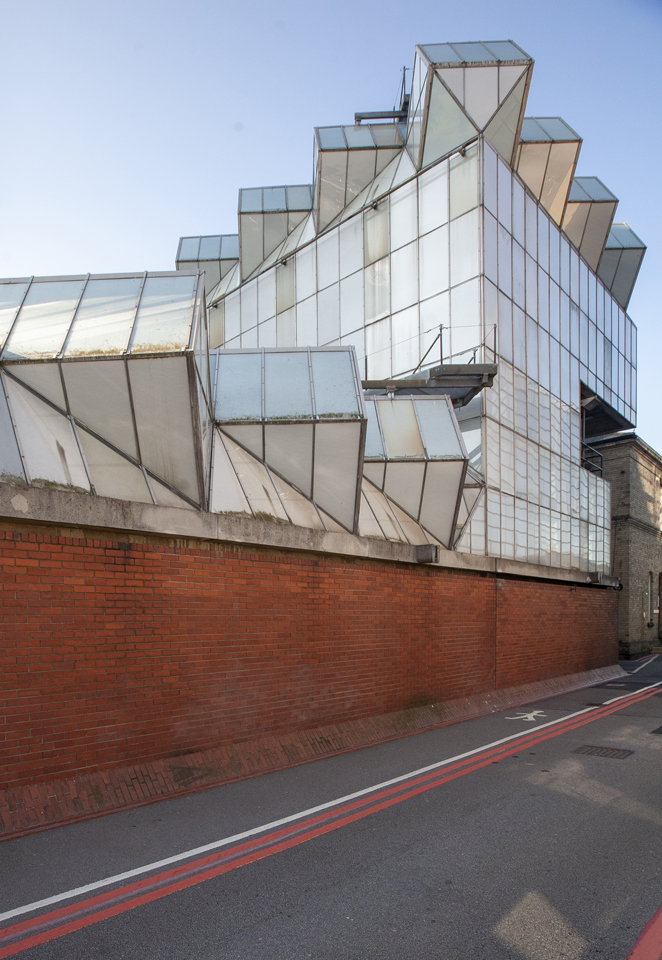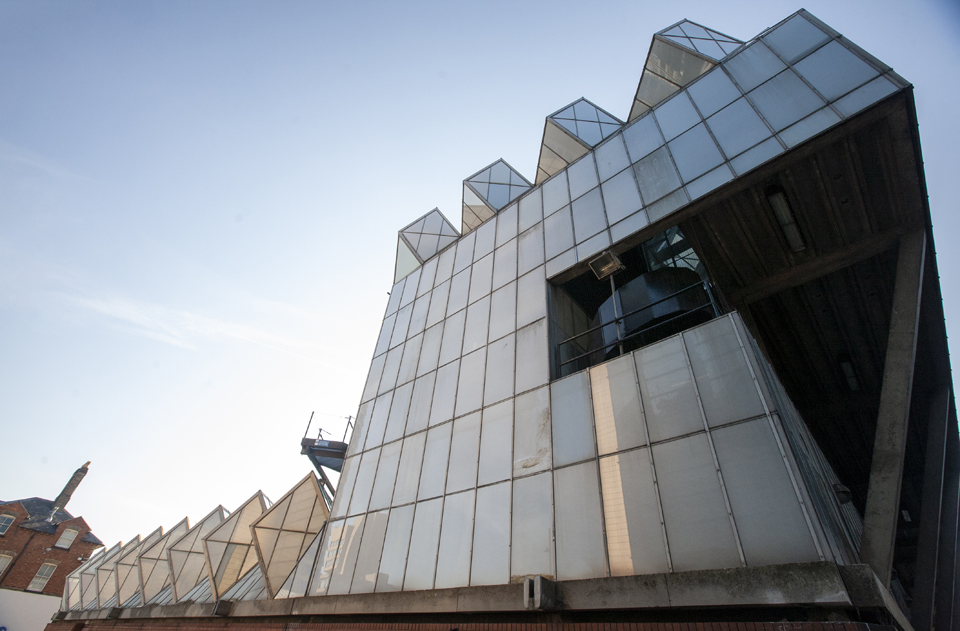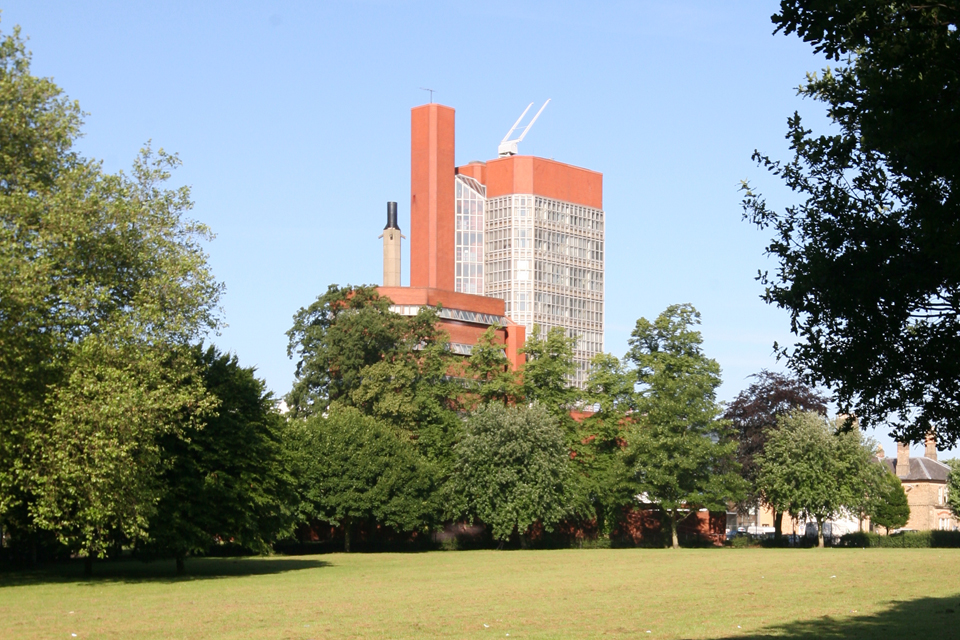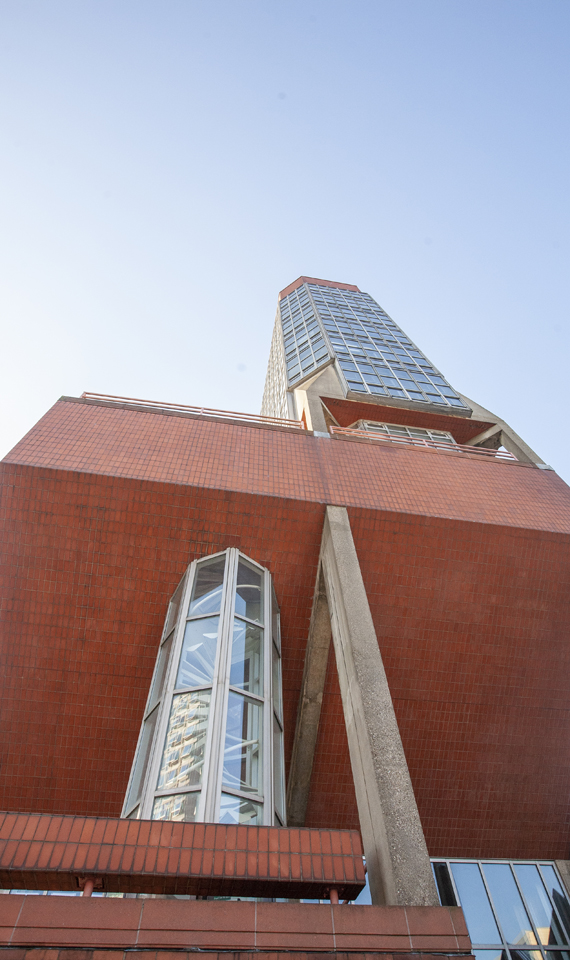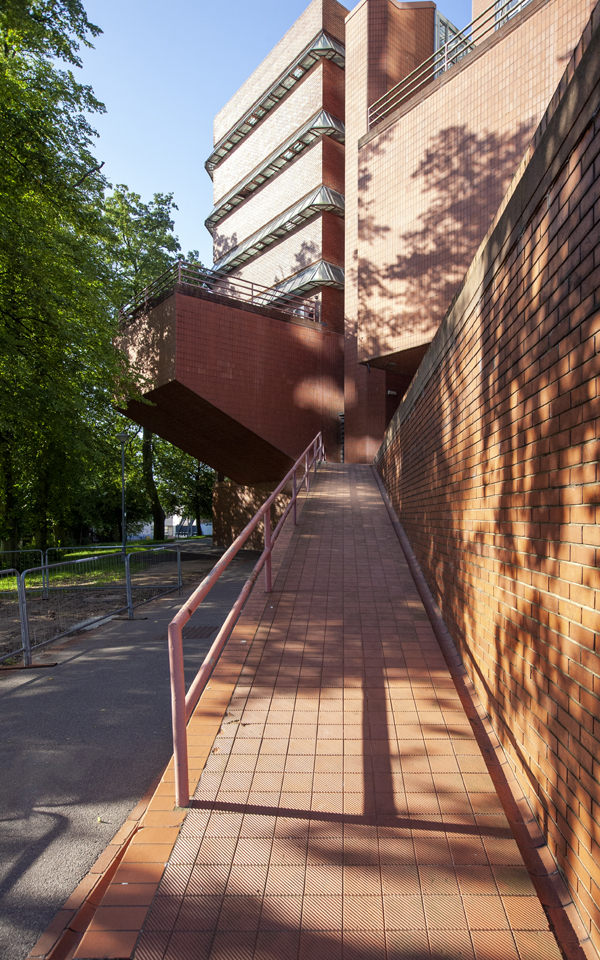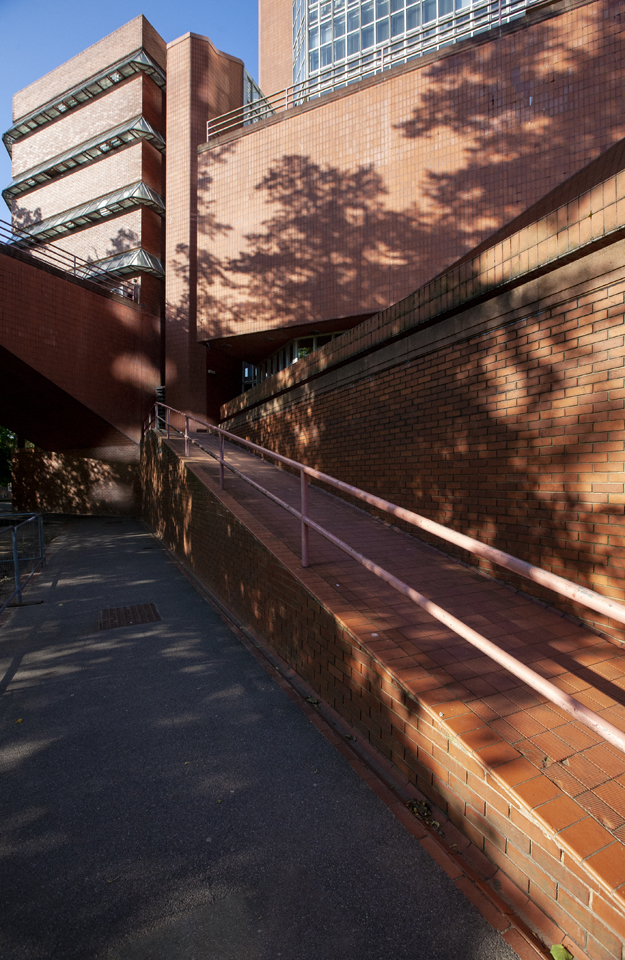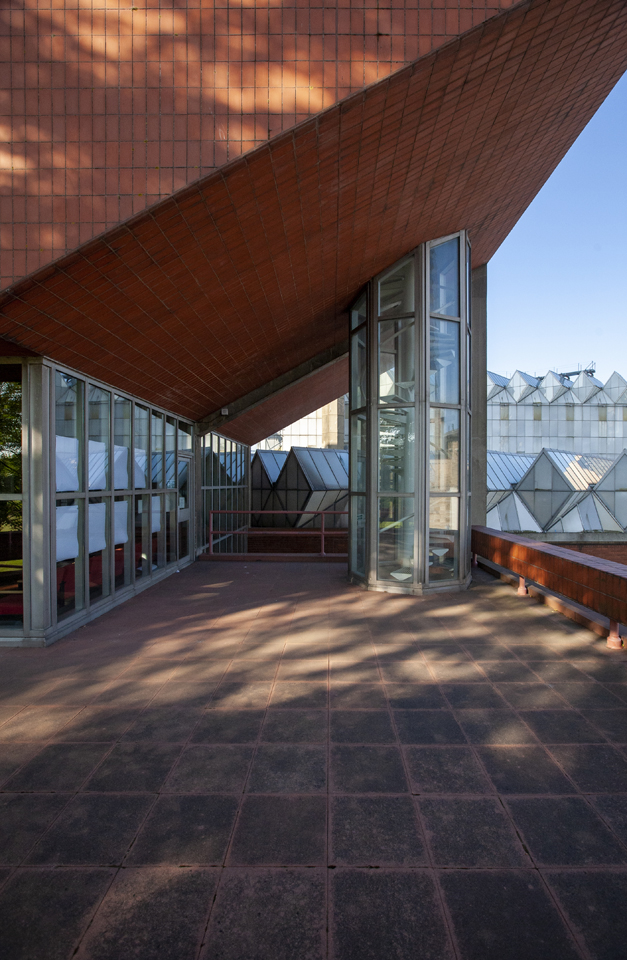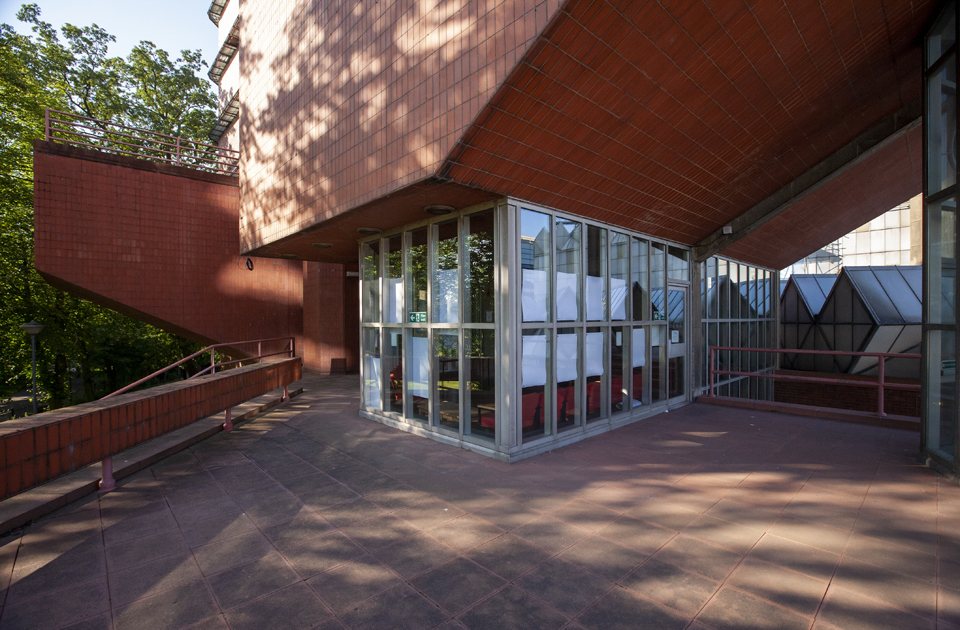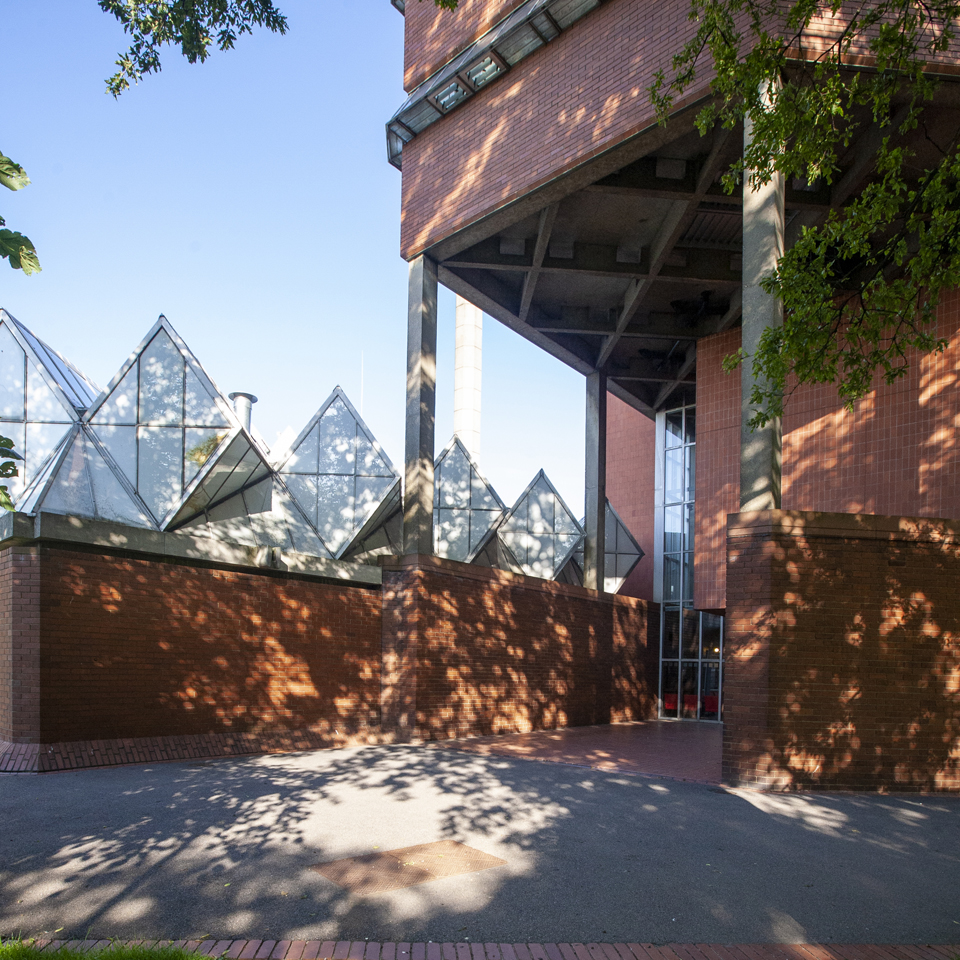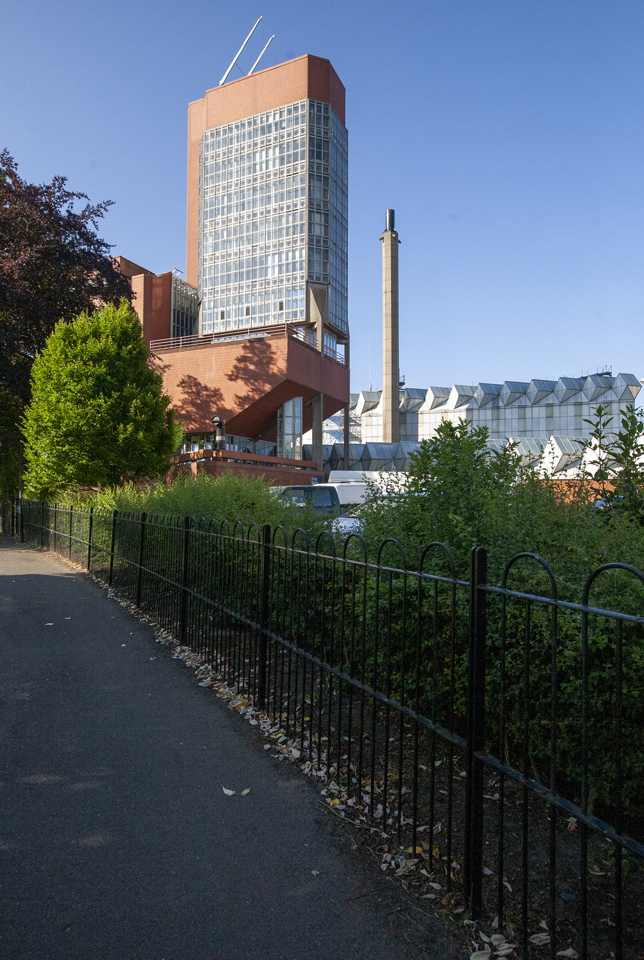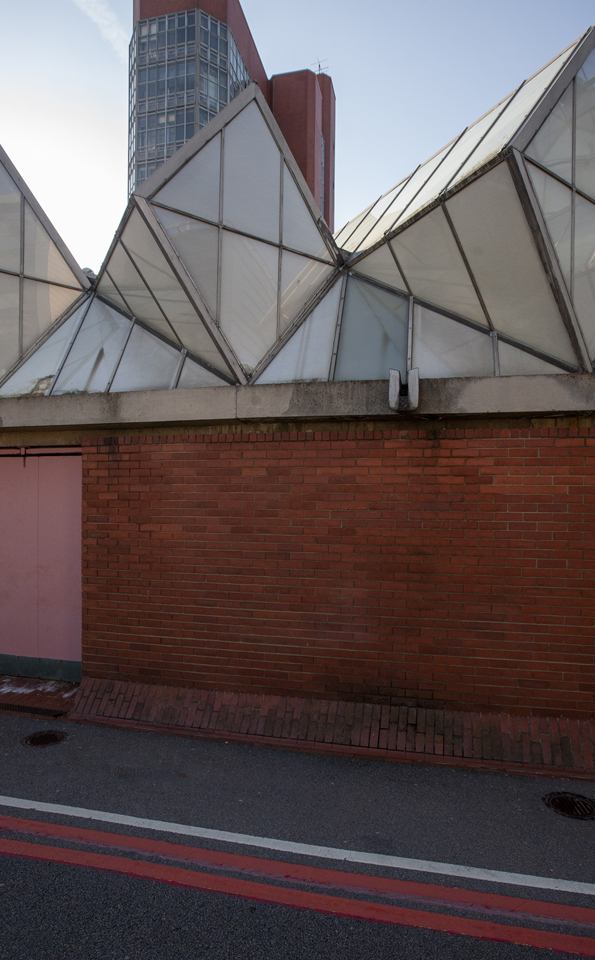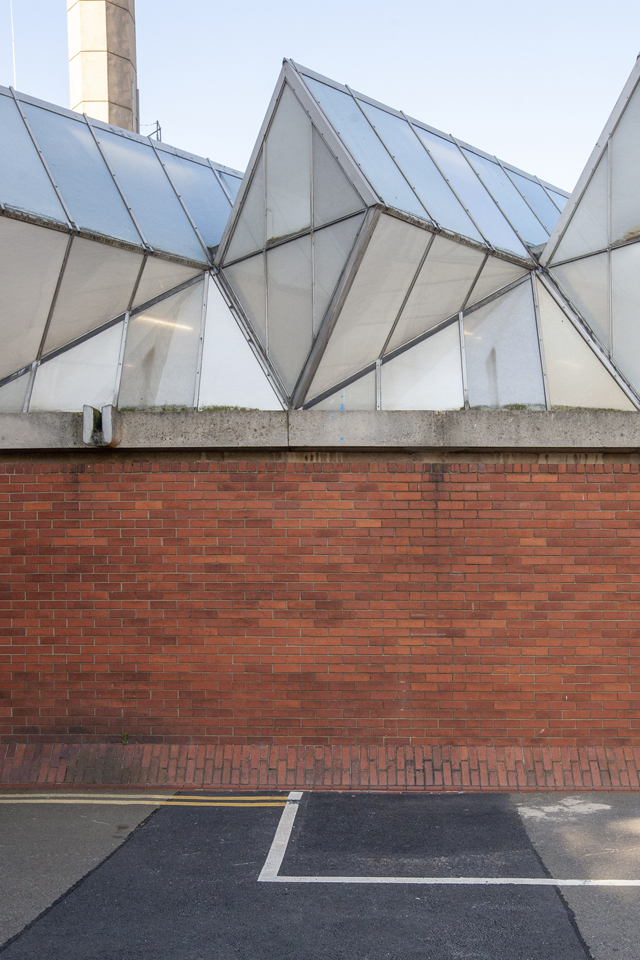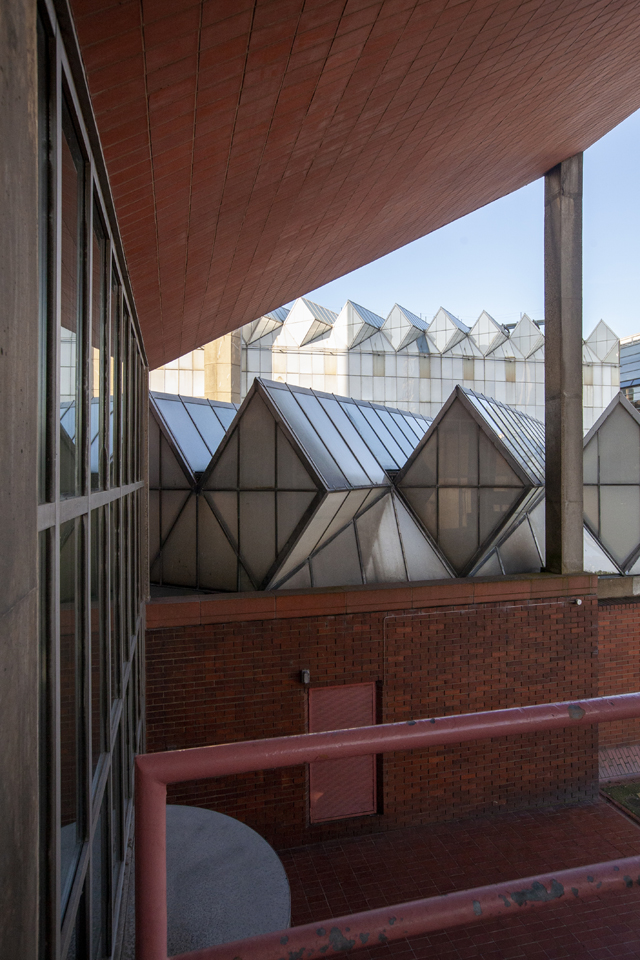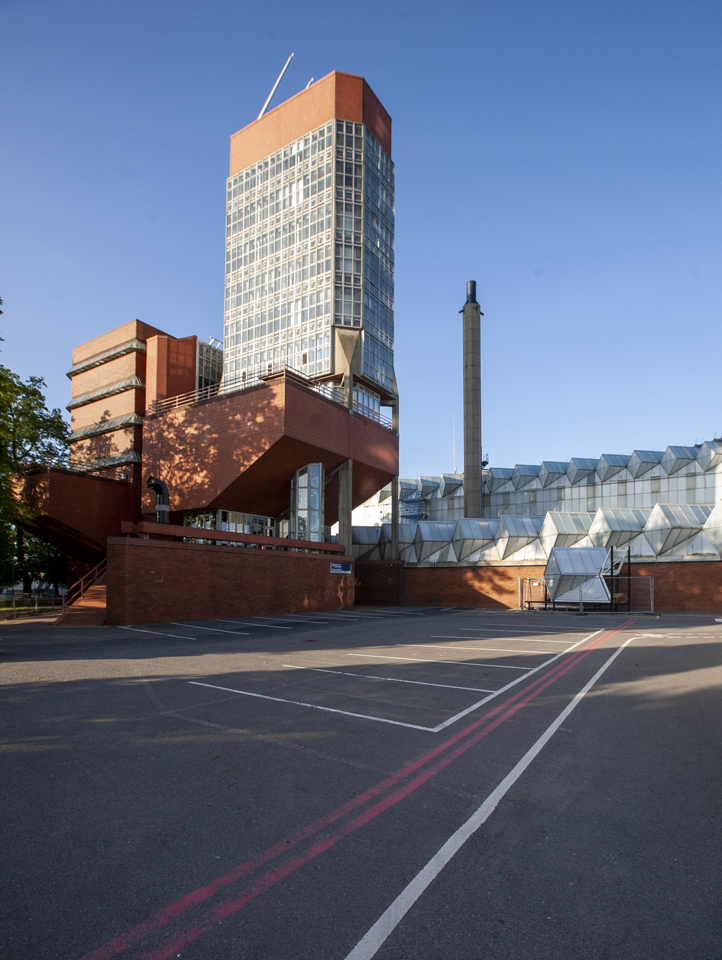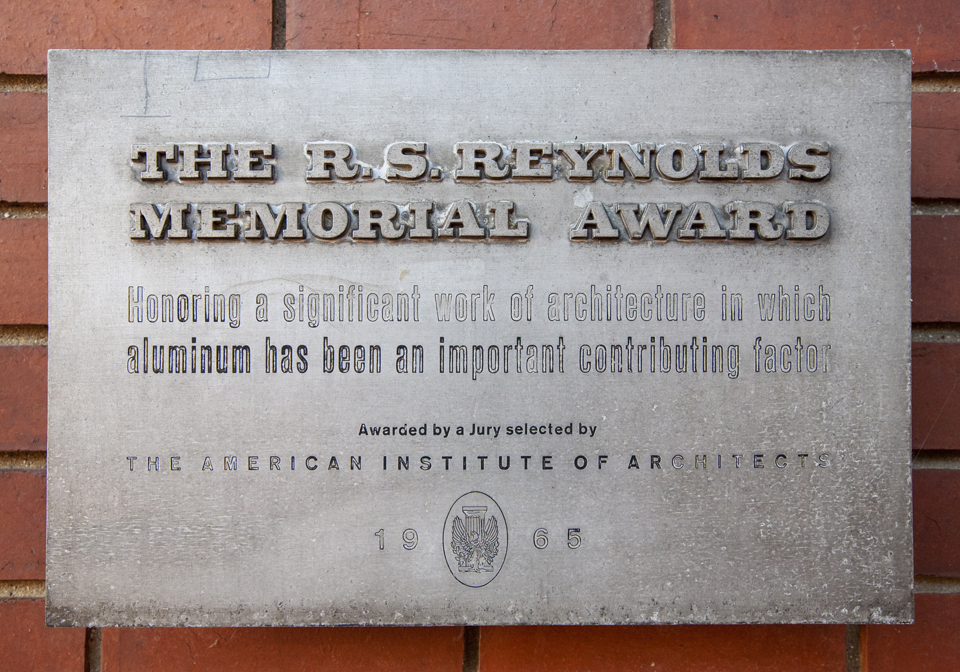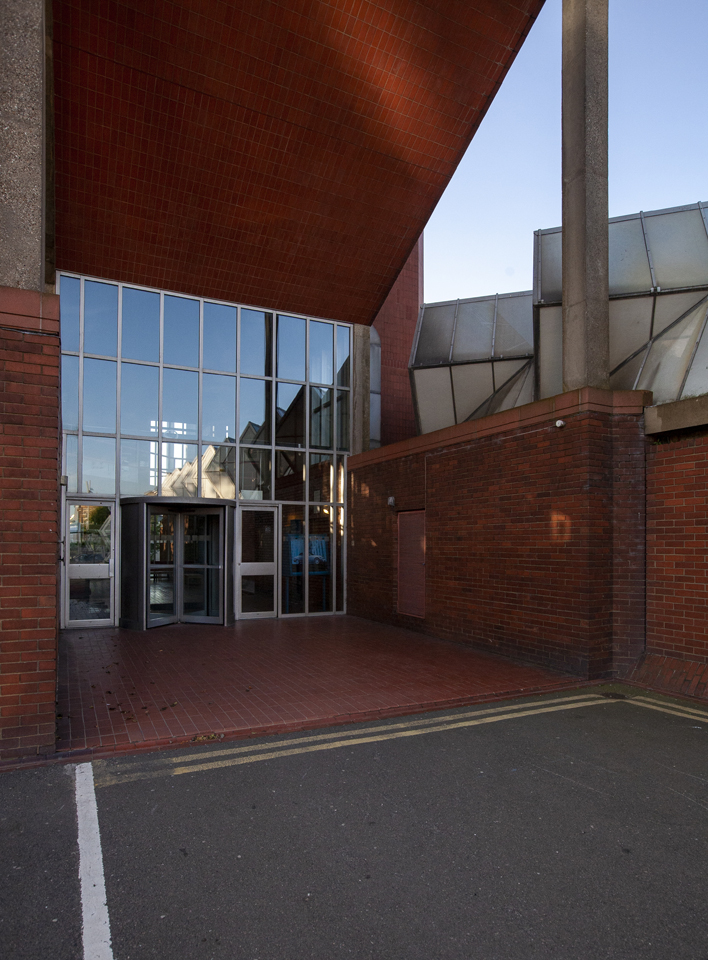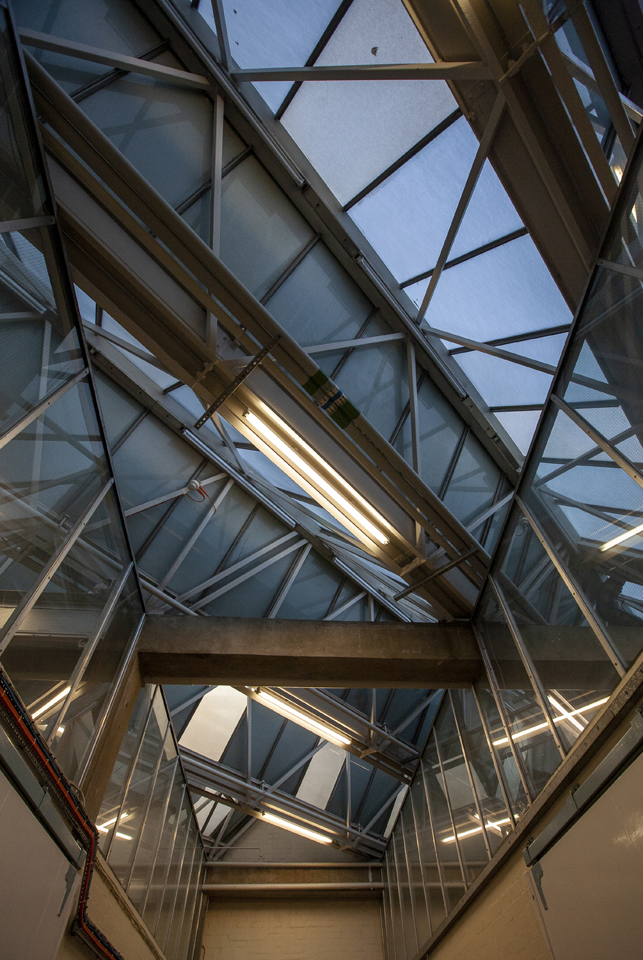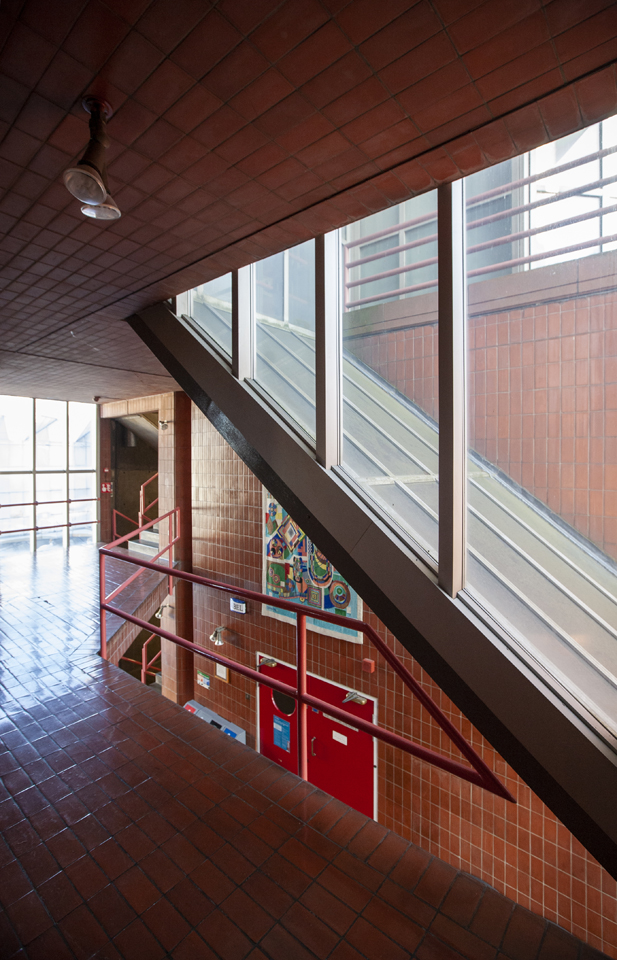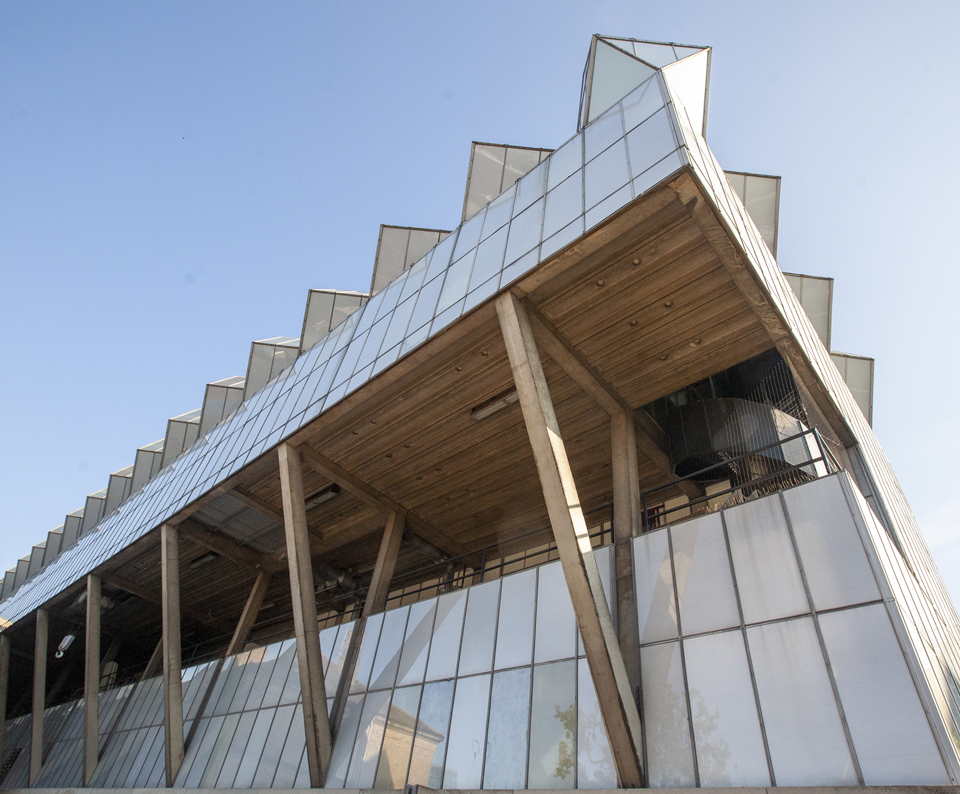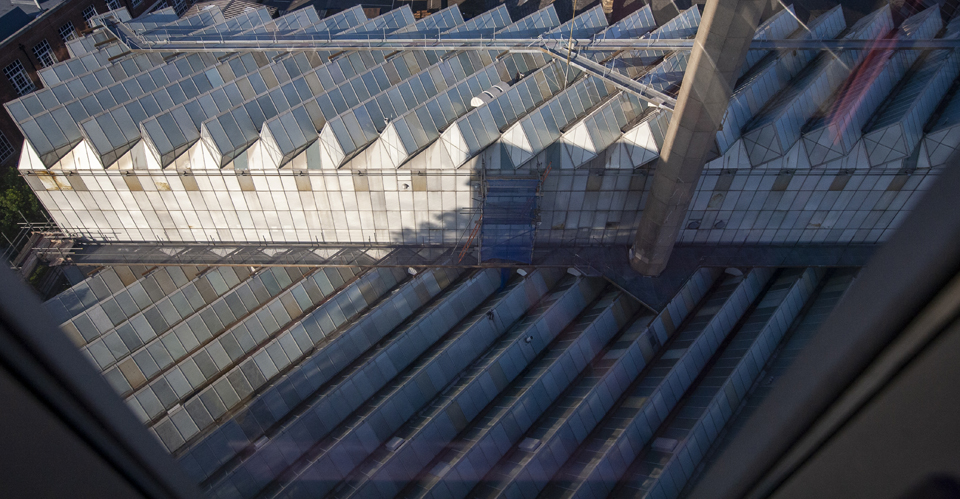Engineering Building
1963
Is this the most celebrated modern building in Britain? If not, it is certainly near the top of the list and an absence of new superlatives with which to describe it. Designed in 1959 and completed in 1963, critics at the time did not know how to contextualise its design. In the Architectural Review, John Jacobus reached for Kahn, Rudolph, St Elia and Frank Lloyd Wright, later observers threw Melnikov into the mix. [1] Mark Girouard listed, ‘Lissitsky, ships, decks, aerodynamics, rockets, sewers, viaducts, silos, bunkers, angry young men and the Victorian working classes’ as ‘among the sources images and associations called into service.’ [2]bRegardless of its precedents, its antecedents are too many to list. Was it proto-PoMo? Did it start the British High Tech movement? Both are possible, but what is clear, is that the scheme leapt off the pages of the journals and was permanently embedded into architectural culture. Scholars of Stirling and Gowan have debated its evolution as a form, tying it back to their earlier works, such as the competition entry for Sheffield University of 1953. Gowan himself pointed to their entry to the competition for Churchill College Cambridge, ‘which had a similar ‘pile up’ of forms, a ramp up to a podium and separate circulation towers’. [3] Personally, I think it owes a lot to Villa Stein.
The curiosity surrounding its genesis is testament to the impact the building had and its unique qualities that altered British architecture forever. Of course, in simple, formal terms, there was a series of parameters that limited and informed its seemingly avant-garde mass. The site and the brief conspired to create some of the conditions – the angular site at the edge of the campus was not big enough to accommodate the requisite building programme without a tower. In tandem with this, there was a demand for a water tower to be at a height of 100ft (30.5m) to feed the hydraulics laboratory at the desired pressure. Thus, the tank, at the head of the tower, forms an exaggerated brick cornice to the glass tower, although it has also been described as a ‘water-tower whose legs have been filled in’! [4] Similarly, the site would not allow for a typical north facing engineering shed within its demise. From this, the orientation of the striking angular roof was determined, in turn influencing the interplay of geometry within the adjacent podium. The two cantilevered lecture theatre blocks, set at right angles to one another, spring from the podium and underpin the ascending tower, their presence overemphasised by the rebated façade between them. These articulations, along with those of the vertical circulation, were elements unlikely to change in their function and were deliberately expressed. [5] Regardless of its precedents and its defining parameters, the remarkable form testifies to James Stirling’s assertion that ‘it should be realised that a correct organisational structure is more important than secondary considerations of structure or systems’, and James Gowan’s belief that ‘our structural promise is unlimited: whatever the mind conjures up, there is a technique available to build it.’ [6] This unfettered approach liberated the design of the Engineering Building from the perceived shackles of modernism and the weight of debate around its English inflections to create a new order open to any interpretation a user, viewer or critic wished to ascribe.
The building was intended to house a new course in general engineering, with novel modes of teaching designed to allow undergraduates a generalist education in advance of selecting an engineering specialism. As such, much of the space was to be ‘flexible’, though its interpretation varied in those who recalled it. Professor of Mechanics, E.W. Parkes account was that the ‘final details of many services and features were not settled until later, when further academic staff' were available to give advice.’ [7] James Gowan was reported to have considered that, ‘Flexibility was another word for ‘don’t know’ and too often what started as this ended in a detailed brief arriving too late’. [8] Materially, Stirling and the client were of the opinion that exposed mass concrete was not fitting for the scheme, or the climes. The red Dutch tiles used to clad the lecture theatre blocks were so matched to the brick used for the rest of the podium that the difference is only discernible at close quarters. The reductive, yet consistent, approach to the material specification, that extended to cladding doors using brick slips, afforded a monolithic quality to the podium, its indents appearing as if carved ‘out of the solid’ (a phrase used by Geoffry Powell explaining why he had chosen it in the ‘Architects’ Architecture’ survey in AJ January 1964). [9] From a practicing architects’ point of view, perhaps one of the most impressive feats in the realisation of this landmark project was that it met the budgetary limits set by the University Grants Committee. UGC budgets were steadily being tightened during this period as completed buildings set new cost yardsticks by type. Admittedly, this scheme was in advance of the system building of the New Universities and thus less stringently funded, but to achieve excellence in design and construction within budget is another mark of architectural skill that is prosaic, but underacknowledged. Whatever the measure put against it, Leicester University Engineering Building triumphs - deservedly so.
[1] See Crinson, M. (2014). Melnikov in Leicester-A Mythology. In Leuchtturmprojekte in der Architektur und Stirling Lectures (pp. 68-83). Karl Krämer Verlag.
[2] Girouard, M., 'Florey Building, Oxford', Architectural Review, November 1972, p.266
[3] Architects’ Journal, 25 March 1964, p.678.
[4] Architectural Review, April 1964, p.259.
[5] Architects’ Journal, 3 March 1965, p.510.
[6] Architects’ Journal, 15 January 1964, p.116
[7] Parkes, E.W. (1965) ‘A New Department of Engineering’, Proceedings of the Institute of Mechanical Engineers, vol. 180, no. 3, pp.51-55.
[8] Architects’ Journal, 25 March 1964, p.678.
[9] Architects’ Journal, 15 January 1964, p.130.
